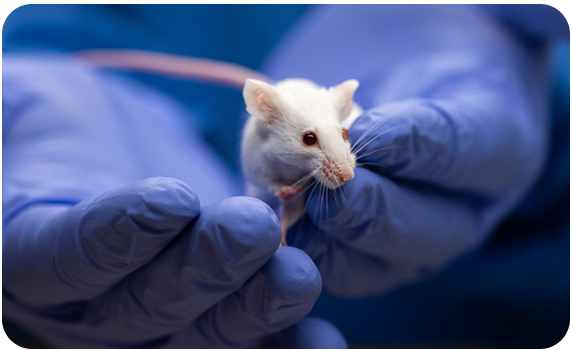Molecular Mysteries of the Rodent Brain: A Researcher’s Spatial Journey
"My single-cell transcriptomic experiments have focused on uncovering and understanding the molecular makeup of cellular heterogeneity in the rodent brain."
- Dr. Prithviraj Rajebhosale, Ph.D., Research Fellow, David Talmage Lab Section on Genetics of Neuronal Signaling National Institute of Neurological Disorders and Stroke, NIH
Exploring the complexities of the rodent brain at a molecular level is no small feat, especially when delving into the nuances of cellular spatial heterogeneity. Traditional methods often fall short in confirming gene co-expression and mapping spatial distributions, but with RNAscope in situ hybridization (ISH), Dr. Prithviraj Rajebhosale from the National Institute of Neurological Disorders and Stroke at National Institute of Health (NIH) from David Talmage’s Lab, highlights his experience and how RNAscope ISH spatial omics analysis can get you the most out of your single-cell transcriptomics experiments.

Complementing transcriptomic discoveries, testing the hypothesis.
"My single-cell transcriptomic experiments have focused on uncovering and understanding the molecular makeup of cellular heterogeneity in the rodent brain," Dr Rajebhosale begins, setting the stage for their groundbreaking work. Initially, bioinformatic analyses provided a wealth of data, yet confirming the co-expression of multiple genes and mapping their spatial distribution within different brain regions posed significant challenges.
The turning point came with the RNAscope ISH HiPlex assay. "The RNAscope HiPlex assay provided the much-needed flexibility for this project. It allowed me to quickly validate tens of targets and their co-expression," the researcher shares. This capability was pivotal, enabling the validation of numerous markers and fostering the exploration of even more complex questions.
RNAscope ISH delivers unmatched performance.
A major highlight of RNAscope ISH's spatial omics technology is its data quality. "The biggest advantage for me is the robustness of the assay. I have rarely encountered issues with the probes or had an experiment fail," the researcher notes, underscoring the reliability and consistency of the platform. Reliability of the RNAscope ISH technology alleviated the significant burden of finding and validating antibodies, a common bottleneck in such applications.
The versatility of RNAscope ISH extends beyond single-cell analysis. "I have used RNAscope to validate my bulk RNASeq data. Given its quantitative capabilities, I could easily validate several differentially expressed genes without the need to pilot and optimize cumbersome qPCR/Immunoblot assays," Dr. Rajebhosale explains. This capability streamlines the validation process, saving valuable time and resources.
Dr. Rajebhosale emphasizes that "They have consistently delivered reliable results, taking the anxiety out of the experimental workflow." This reliability is crucial, particularly in complex experiments where precision and accuracy are paramount.
Reveal deeper insights with RNA: No Antibody, No Problem
Finally, RNAscope ISH has opened doors to addressing longstanding scientific questions. "RNAscope assays have also enabled us to ask questions that have remained unanswered for decades due to the lack of specific antibodies and uncertainties about the subcellular localization of proteins, making staining patterns unclear," the researcher reveals. This breakthrough has significant implications, offering new insights and resolving ambiguities that have hindered progress in the field.
In conclusion, the RNAscope ISH spatial omics analysis tools have been proven invaluable in Dr Rajebhosale’s quest to unlock the intricacies of cellular spatial heterogeneity in the rodent brain. Through flexibility, robustness, and quantitative capabilities, RNAscope ISH technology has transformed the experimental landscape, enabling discoveries that were previously out of reach.